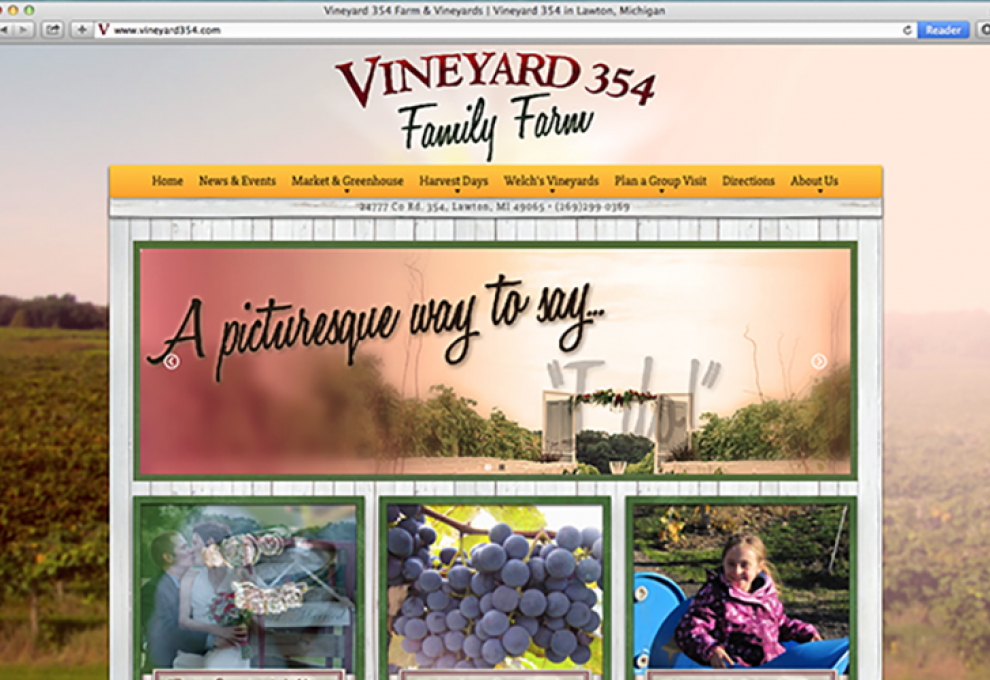
Anyone remember what happened on April 21, 2015? That’s the day Google changed the algorithms on its search engine, placing a higher ranking on websites that are mobile-friendly. For any business that counts on consumer traffic to make sales, this is a major shift.
Some American and Canadian farm marketers realized the significance and called on Danny Mauk, FarmWebDesign, St. Louis, Missouri to upgrade their websites. He’s a specialist in agritourism and farm markets, everything from pick-your-own apples to cut-your-own Christmas trees.
“My primary focus these days is responsive web design,” he says prior to his presentation at the Great Lakes Expo on December 8 - 10, 2015. “That means creating mobile-friendly websites that can be accessed from anywhere and still be readable on a desktop, tablet or smartphone. The text may be large but it must be transformed to different-sized screens without the user having to zoom in.”
Here are Mauk’s seven tips for websites that work in the farm retailer environment.
Make sure to have access to all pages
Navigation must be simple on your website. There should be no pages that are hard to find because of hidden links. If you list ripening dates for apple varieties, for example, then they must be accessible from your home page.
Create wording that maximizes Search Engine Optimization (SEO)
When customers Google for a product or service, they use key words. The more precise you are in describing your business and the more frequently you repeat that phrase on your website, the easier that local customers can find you.
“Longtail key words such as pick-your-own apples are better than shorttail key words such as apples,” Mauk explains.
Also research what key words are relevant to your target audience. For example, when you partner with like-minded organizations such as your commodity group or marketing association, you will get more traffic. Think of your provincial asparagus group or your provincial farm fresh marketing association.
Use social media as a teaser to drive traffic
Incorporate social media into your marketing plans so that you drive traffic to your website. It’s the website that drives sales. Use Facebook and Twitter to announce weekly contests, trivia questions and Farm Fact Fridays.
Make photos and video a priority
“If photos are worth a thousand words, then video is worth a million words,” says Mauk. He recommends a ratio of half written content and half images for better SEO. The images tell a story, especially if they depict the farmer in the field. While drones are the new toy, he does not recommend drone shots for websites. “Drone shots are too high to convey any personal connection with what you’re selling,” he says. “After 30 seconds, the impact is gone. Rather, take photos at ground level of kids playing or customers picking up fresh produce.
Freshen your content
Keep your content accurate and seasonal. Blogs are helpful in relaying the cycles of the year and binding your customers, even when produce isn’t for sale. Share your seed catalogue decisions, for example. Or show a photo of a warty pumpkin in the field to draw interest to a traditional commodity.
Reformat your content
These days, customers expect to be connected in real time no matter where they are. If they’re in the back woods and don’t have a cell phone signal, they can still Google your farm to find directions. Make sure your farm address and directions are at the top of the website home page to make it easier to find you.
Stay connected to graphic trends
“Country weddings are very trendy right now,” says Mauk. “And many farm retailers offer destinations for country weddings.” There’s a fine line between a rustic feel to your website and an urbane sensibility. Simplicity is sophistication. Keep the website clean with white space. Some examples are: www.vineyard354.com based in Lawton, Michigan and www.downeysfarm.com based in Brampton, Ontario.

Add new comment